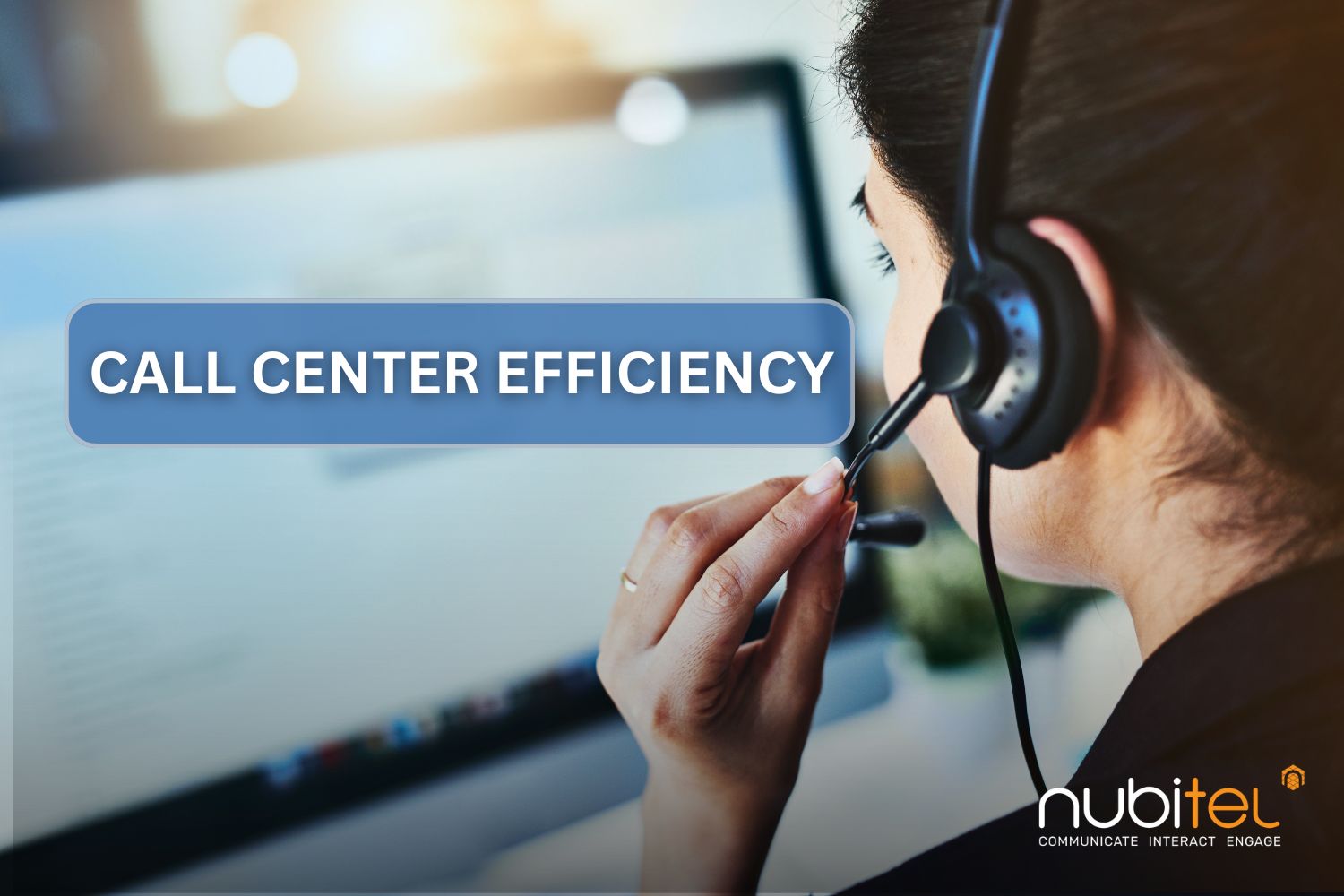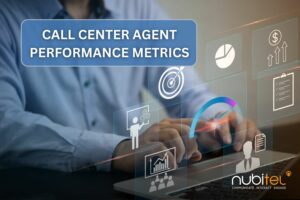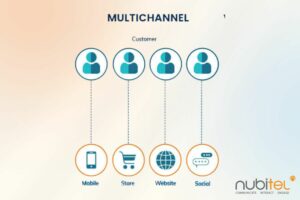Call center efficiency is a cornerstone of delivering a standout customer experience (CX). With 44.5% of organizations globally identifying CX as a primary competitive differentiator, ensuring smooth and effective call center operations is more critical than ever. When call centers streamline processes and resolve customer concerns quickly, they build trust and loyalty. This guide breaks down what call center efficiency means, how to measure it, and actionable strategies to enhance it.
Key Metrics for Measuring Efficiency
To effectively measure and improve call center performance, understanding key metrics is essential for achieving operational efficiency.
Average Handling Time (AHT)
Average Handling Time (AHT) is a key performance metric that measures the average duration an agent spends handling a customer interaction.This includes talk time, hold time, and after-call work.
While a lower AHT often indicates improved efficiency, prioritizing speed over quality can lead to frustrated customers and unresolved issues. Striking the right balance ensures both productivity and a seamless customer experience.
AHT Calculation Formula:
AHT Calculation Example:
Imagine your call center handles 200 customer calls in a day. After reviewing your call logs, you find the following data:
- Total Talk Time: 4,000 minutes
- Total Hold Time: 900 minutes
- Total After-Call Work (ACW): 600 minutes
Now, applying the AHT formula:
AHT = (4,000 + 900 + 600) / 200 = 27.5 minutes
This means your agents spend an average of 27.5 minutes per customer interaction from start to finish.
First Call Resolution (FCR)
First Call Resolution (FCR) measures the percentage of customer issues resolved during the first interaction, without the need for follow-ups or escalations. A higher FCR rate often correlates with better customer satisfaction and operational efficiency.
First Call Resolution (FCR) Calculation Formula:
First Call Resolution (FCR) Calculation Example:
Imagine your call center resolves 150 customer issues during the first call out of a total of 200. To calculate your FCR, you would use the formula:
FCR = (150 / 200) x 100 = 75%
This means that 75% of the issues were resolved without the need for a follow-up, enhancing both customer experience and operational effectiveness.
Customer Satisfaction Scores (CSAT)
Customer Satisfaction Scores (CSAT) track how satisfied customers are with their interaction experience. This metric is essential for evaluating the efficiency and effectiveness of a call center.
Customer Satisfaction Scores (CSAT) Calculation Formula:
Customer Satisfaction Scores (CSAT) Calculation Example
Imagine your call center gathers 200 responses from a post-call survey. Out of those, 160 customers indicate they are satisfied with their experience. To calculate your CSAT, you would use the formula:
CSAT = (160 / 200) x 100 = 80%
This means 80% of customers were satisfied with their call center experience, providing valuable insight into areas for improvement and optimization.
Strategies to Enhance Call Center Efficiency
To improve call center efficiency, implementing targeted strategies that streamline workflows and boost agent performance is essential. These strategies not only enhance operational productivity but also contribute to a better customer experience.
Leveraging Technology and Automation
Technology plays a pivotal role in optimizing call center operations. By implementing AI-powered chatbots, IVRs, and predictive dialers, routine tasks are automated, allowing agents to focus on more complex customer issues.
For example, your company could implement an AI-driven IVR system to handle routine inquiries, such as account balance checks, effectively reducing call volumes and accelerating issue resolution.
Adopting omnichannel platforms ensures seamless transitions across different communication channels (e.g., phone, email, chat, social media). Meanwhile, AI-driven analytics can proactively identify patterns in customer interactions, enabling faster problem-solving.
By integrating automation and advanced technologies, businesses can enhance response times, boost agent productivity, and provide a superior customer experience.
Employee Training and Development
A well-trained team is essential to optimizing call center efficiency. By offering comprehensive onboarding and continuous learning opportunities, agents develop the skills necessary to handle a wide variety of customer queries.
For example, your company might incorporate role-playing exercises and real-life simulations to better prepare agents for high-pressure situations, improving problem-solving abilities and response times.
Leveraging AI-based coaching tools for personalized feedback, along with call recordings, helps managers pinpoint individual training needs and track progress.
Ongoing training ensures agents stay current with new products, technologies, and evolving customer expectations, enhancing both competence and confidence in daily operations.
Streamlining Workflow and Processes
Efficient workflows are essential for eliminating bottlenecks and enhancing productivity. By mapping out the customer journey, your company can identify pain points and streamline processes. For example, refining your escalation process can help ensure that issues are quickly directed to the appropriate team, improving resolution times.
Utilizing unified dashboards that provide a clear view of key performance indicators (KPIs) and team performance allows managers to make data-driven decisions that improve overall efficiency.
Standardizing processes also ensures consistent service quality, reduces errors, and enables agents to navigate tasks with greater ease, leading to higher productivity and customer satisfaction.
Challenges in Improving Efficiency For Call Centers
Improving call center efficiency requires overcoming several obstacles that can hinder performance and service quality. Addressing these challenges is vital to ensuring smooth operations and maintaining high levels of customer satisfaction.
Addressing High Employee Turnover
High turnover rates can disrupt call center efficiency, leading to increased training costs and lowered employee morale. Offering competitive salaries, career development opportunities, and fostering a positive, supportive work culture are key strategies to reduce turnover.
Example: Your company is facing high turnover rates that are impacting call center efficiency and raising training expenses. To tackle this, consider implementing flexible working hours, providing career advancement programs, and cultivating a positive workplace culture.
These efforts can help improve employee retention, promote work-life balance, and ultimately reduce attrition rates, creating a more stable and productive workforce.
Balancing Speed and Quality
Focusing solely on speed can lead to a decline in service quality. Striking the right balance requires clear performance metrics that evaluate both efficiency and effectiveness.
Example: A call center that provides technical support can use a software tool to record and analyze calls, generating quality scores based on the accuracy, completeness, and clarity of the information provided.
Encouraging agents to focus on resolving issues thoroughly, rather than rushing through calls, can foster higher customer satisfaction levels. By simultaneously monitoring both quantitative metrics (e.g., AHT, FCR) and qualitative aspects (e.g., customer empathy, issue resolution), businesses can maintain a high standard of service while optimizing efficiency.
Adapting to Changing Customer Expectations
Customer expectations are constantly evolving, making it crucial for call centers to stay flexible and responsive. Incorporating customer feedback mechanisms, such as post-call surveys, social listening tools, and focus groups, allows businesses to quickly identify shifts in customer preferences.
Example: Your company is aiming to meet the needs of younger, tech-savvy customers who prefer digital communication. By integrating support channels like social media (Facebook, Twitter, Instagram), live chat, and messaging apps (WhatsApp, Telegram), you can offer faster, more accessible interactions tailored to their preferences.
Investing in scalable technology platforms, continuous agent training, and predictive analytics ensures that call center teams are equipped to handle diverse customer demands. By staying responsive to market trends and embracing new communication channels, businesses can maintain a competitive edge and consistently exceed customer expectations.
Tools and Software for Call Center Efficiency
To improve overall call center efficiency, leveraging the right tools and software is essential. By integrating various platforms, call centers can streamline operations and enhance productivity, ensuring a seamless experience for both agents and customers.
CRM Systems
Customer Relationship Management (CRM) systems centralize customer data and enable agents to provide personalized service. Integrating platforms ensures that agents have real-time access to customer histories and managing customer cases, reducing resolution time.
Advanced CRM features can also automate routine tasks such as follow-up reminders and data entry, freeing up more time for agents to focus on customer interactions.
Effective CRMs also offer advanced analytics and reporting features, helping managers monitor team performance, identify opportunities for improvement, and align operations with customer needs. Seamless integration with other software tools ensures smooth workflow processes and operational efficiency.
Analytics and Reporting Tools
Analytics and reporting tools are critical for monitoring and improving call center performance. With Nubitel’s advanced analytics solutions, call centers can gain real-time insights into key metrics such as call volume, agent performance, and customer satisfaction levels.
These tools enable managers to track individual agent productivity, identify trends in customer interactions, and assess service quality, ensuring continuous improvement in operations.
Customizable dashboards and detailed reports help businesses make data-driven decisions, optimizing workflows and identifying opportunities for growth. Integrating analytics with Nubitel’s CRM and omnichannel systems further enhances reporting accuracy, providing a comprehensive view of customer interactions and enabling managers to adjust strategies based on actionable insights. This leads to more informed decisions, improved service delivery, and better customer retention.
AI-Powered Solutions
AI-powered tools revolutionize call center operations by automating routine tasks and providing real-time insights. For example, sentiment analysis software can detect customer emotions during interactions, enabling agents to adjust their responses accordingly.
AI-driven coaching tools can enhance employee training by delivering real-time assist cards and suggestions based on ongoing customer interactions. This approach leverages customer interaction analytics to help agents refine their skills during live queries, resulting in improved productivity and higher customer satisfaction.
Conclusion
Call center efficiency is a critical factor in delivering exceptional customer experiences and optimizing operational resources. By focusing on key metrics, implementing targeted strategies, and leveraging cutting-edge tools and technologies, businesses can drive continuous improvement in their call center operations.
Addressing challenges such as employee turnover, balancing speed and quality, and adapting to shifting customer expectations ensures long-term success. Adopting best practices and investing in the right tools empowers call centers to enhance their efficiency and stay ahead in a highly competitive business landscape.





